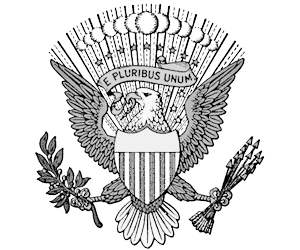|
|
|
|
|
The rise of Japanese Militarism in the 1930's was triggered by a serious economic crisis and a weak civilian government. The Japanese military acted independently from the civilian government and invaded Manchuria in northern China and then took over major positions in the government instigating an aggressive, expansionist policy led by General Tojo. Japan joined Germany and Italy in the Tripartite Pact agreeing to help each other if the United States joined in WW2. Japanese militarism led to the occupation of Indochina which resulted in the US oil embargo which the military in Japan viewed as a pretext for war. The militarists in Japan bombed the US fleet at Pearl Harbor December 7, 1941 bringing America into WW2.
Examples of Japanese Militarism
Facts about
Japanese Militarism The 1924 Immigration Act prohibited Japanese immigration into the US. Many in Japan were greatly offended by the new law and saw these actions as provocative and increased tensions between Japan and the United States. Japan adopted Asia-centric positions emphasizing Asian culture and traditions, portraying the ‘ABCD Powers’ (America-British-Chinese-Dutch) as a threat to the Japanese Empire. Japan adopt the government system of Totalitarianism that asserted absolute and total control over the public and private lives of its citizens. Other countries that adopted Totalitarian governments were the Fascist governments in Italy and Spain, the Nazi government of Germany and the Communist government of the Soviet Union. The effects of 1930's Great Depression in the US had spread across the world and Japan was plunged into a serious economic recession. Japan industries needed to import nearly all the resources to produce goods. As the worldwide recession hit other countries they raised their tariffs (taxes) making the situation in Japan even worse. Many Japanese military officers blamed the country's financial problems on corrupt politicians and believed that the only way to get the natural resources they needed was to take them by seizing other territories. In November 1930, the Prime Minister of Japan, Hamaguchi Osachi, attempted to force the military to yield to civilian leadership was shot by a right-wing nationalist. In September 1931, as control started to slip away from the civilian government, the Japanese army acted independently and invaded the resource rich province of Manchuria in Northern China. The Fascist General Hideki Tojo rose in power to become the military's leading political figure and would eventually become the wartime leader of Japan’s government. In May 1932, an attempt by the military to assassinate Hamaguchi’s successor failed to become a full-blown coup, but their aggressive action against the politician ended rule by the political parties in Japan and the military were in control. The military ruled Japan and supported the nationalist policy of expanding the Japanese Empire. Their aim was to gain Japanese imperial domination in the Far East with the staunch belief that Japan was destined to rule East Asia. The military leadership in Japan was strongly anti-democratic and anti-communist. In November, 1936 Japan joined Germany in signing the Anti-Comintern Pact against the Soviet Union In 1937 China was subjected to further attacks. The Marco Polo Bridge Incident of July 1937 marked the beginning of total war between China under Chiang Kai-shek and Japan (the Second Sino-Japanese War) By December 1937, the Japanese had defeated Chinese forces at Shanghai and seized Nanking where Japanese troops committed terrible atrocities in what became known as the ‘Rape of Nanking’ in which an estimated 300,000 civilians were killed. Anti-Japanese feeling strengthened in the United States, after the USS Panay, a U.S. gunboat was sunk by Japanese aircraft in the Yangtze River outside Nanking on 12 December 1937 On September 3, 1939 Britain and France declared war on Germany. On September 5, 1939 the United States declared its neutrality in the war In September 1940, Japan signed the Tripartite Pact, forming the Axis powers of Germany, Italy, and Japan, in which the countries agreed to assist each other if they were attacked by any additional power not yet at war with them. The intended target of the Tripartite Pact was the United States. In July 1941, the Japanese military in Tokyo decided to strengthen its position in its invasion of China by moving through Southeast Asia. and the occupation of Indo-China colonies. Japan followed this action by occupying Vietnam in southern Indochina that included the Cam Ranh naval base and eight airfields, 800 miles from the Philippines, where Americans had troops. It also put Japanese airplanes in striking distance of Malaya and the Dutch East Indies. In July 1941 United States reacted to the occupation of Indochina by renouncing the 1911 treaty of commerce with Japan, freezing Japanese assets, closing its ports to Japanese trade and placing an embargo oil and gas (80% of oil in Japan came from the US). When President Roosevelt announced the oil embargo on Japan the Japanese Military saw the move as the perfect pretext for war. On December 7, 1941 the Japanese bombed the United States fleet at Pearl Harbor and the United States declared war on Japan on December 8 1941. |
| US American History |
| 1929-1945: Depression & WW2 |
|
|
|
|
|
First Published2016-04-19 | |||
|
Updated 2018-01-01 |
Publisher
Siteseen Limited
| ||
|
|

